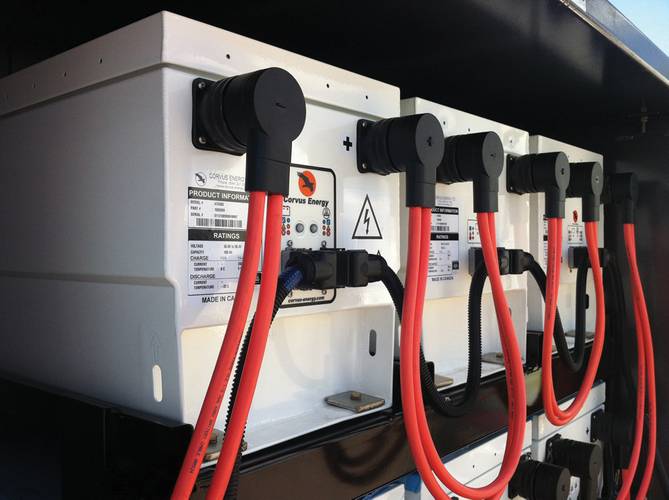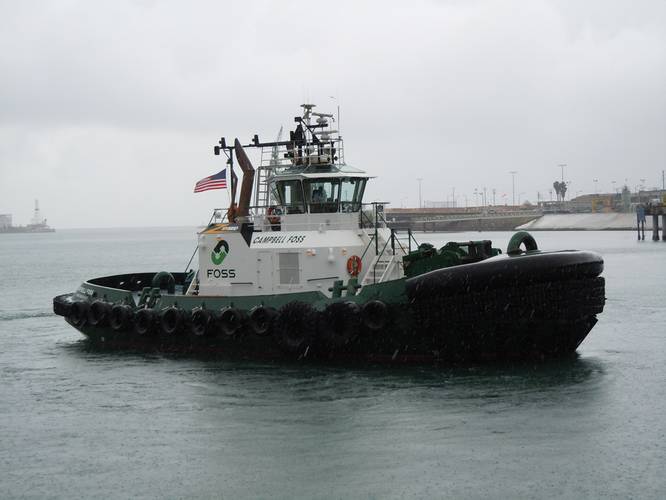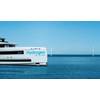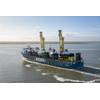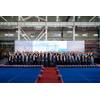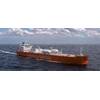The Corvus Power Play
Corvus Energy has quickly evolved as a leader in the marine hybrid propulsion market, developing state-of-the-art battery system solutions on some of the world’s biggest projects. And this is just the beginning.
While the world “revolutionary” is too often and liberally bandied about in the description of new products, Vancouver, BC-based Corvus Energy arguably has created a revolutionary battery for the maritime market, a power source with a power density, longevity and durability which has brought it from concept to major player on leading maritime hybrid projects in less than five years.
What is Corvus?
Corvus Energy is a manufacturer of high power lithium polymer batteries used in the hybridization of heavy machinery such as commercial vessels. Similar in chemistry to the batteries found in the iPhone, these are not just any batteries, they are “smart” batteries according to the company, able to communicate with each other, with the application they power, with the grid, with the source of energy that charges them, and with their human manager who controls them.
“I think what makes us unique is simply that we didn’t come to this business from a battery perspective; we came at it from a boating perspective,” said Brent Perry, CEO, Corvus Energy.
The company started as an idea in 2006. Perry, who enjoyed a career as a boat builder on several continents, was increasingly asked by his customers for hybrid boats. An exhaustive search for a battery source that could help create the solution turned up empty; even direct appeals to battery manufacturers elicited a response which said that commercial maritime was “too niche of a market.” So Perry and his co-founders embarked on the path to design and build their own solution, and to date the company is working on projects ranging in size from 6.5kWh up to multiple megawatt scale installations, with its batteries in hybrid marine applications soon being directly responsible for emissions reductions in the range of thousands of tons annually.
Building a Better Battery
Manufacturing any product for the maritime market means engineering a solution that can take the unique rigors of working day in, day out, in one of the most demanding and corrosive environments on the planet. According to Perry, when he first embarked on the mission to find battery solutions for his boatbuilding customers that sought hybrids, he found no batteries rugged or serviceable enough that combined the necessary power and long-life capability to withstand the rigors of the marine environ.
“The conditions in maritime are harsh and unique,” Perry said, and offer many factors to consider, including:
• Atmosphere: Extreme weather, high salt, high humidity. “We knew it had to be a fully sealed product, capable of shedding heat as if it were fully vented.”
• Energy capacity: “If you don’t perform as well as a diesel engine, then you are not a true hybrid. The operator should never be able to tell a difference if they are running on diesel or battery power.”
• Communication: The batteries have to be able to communicate … with each other in a network, with the operators … to properly gauge performance.
• Durability: “Our casings start at 30 and go up to 100g impact. They are built to deal with the rigors maritime offers, and there are no moving parts in the battery to fail.”
In addition, they must operate well for a long time. Corvus’ shortest life battery is seven years; it’s longest 20 years.
While the solution is elegant and the reference list chock full of some of the biggest, most progressive names in maritime and growing, running a start-up does not come without challenge.
“Simply put, when you talk about making a decision (to build a company), when sitting around the table everyone can agree on the correct course,” said Perry. “The real pressure comes when you are under pressure to deliver. Maintaining the integrity of your values and corporate culture while you live and work through the initial growth – where every dollar made and every dollar spent is critical – I think is the greatest challenge. Invaluable for me was my previous experience in the maritime industry, because in the marine industry, your reputation is everything. We are lucky to have staff and partners that are focused on getting it right.”
Move to Green
Perry agrees with the assessment that the maritime industry is inherently conservative, averse to adopting new technologies until they are well proven in the field. But there is a twist on the notion of “green.”
“The marine industry is averse to new technology, and I wouldn’t have put anything in my boats that wasn’t proven for 10 years,” Perry said. But when talk turns to “green” in the marine industry, the first of mind thought is energy efficiency and emission reduction. Perry contends, too, there is a stronger “green” pull today.
“But while the industry may be conservative on adopting new technology, the marine industry, too, is all about money … more accurately saving money and improving reliability. If we can prove to them that we can save them money, they will participate. I won’t take a job on if I don’t think we can improve the performance of their operations.”
In fact, Perry sees the users of Corvus Technology as not simply customers, rather as business partners, and he and his team are not simply looking to push batteries out into the market place, rather evaluate each individual company and initiative as a project on its own merits. It is this holistic, project-based approach which gives him the backing to enter only projects where the payback on incorporating the system has a payback of 5 years or less. Today he sees the ferry, tug and Offshore Service Vessel as particularly ripe for the hybrid solution, as well as a major push into the subsea market – where power consumption and integrity are the definitive limiters in the expanded use of subsea robotics – as the major forces of activity in the near term.
But while saving green (cash) is indeed nice, saving the other green (environment) offers tangible benefits, too, fitting in with the Corvus Energy mantra of looking at the whole picture rather than a few pixels. Corvus Energy batteries are the key to hybridizing heavy equipment such as harbor tugboats, ferries and OSVs, which due to duty cycle and fuel consumption lend themselves to dramatic fuel reductions. These fuel reductions translate into large cost savings – particularly with the skyrocketing costs of all fuel and pending legislation that will make marine fuel significantly cleaner and more expensive by 2020 – and provide return on investment in very short time frames. In turn, the fuel saved also provides huge reductions in carbon, particulate and NOx emissions. Particulate matter is reduced most significantly as most of the fuel savings is incurred at low engine speeds when the engines are operating at least efficiency and producing most soot.
References
In any industry it seems that a company’s prowess is best told by the references it holds, and Corvus has no shortage of high-profile marine references, serving some of the biggest, most progress names in the business, including Foss, Eidesvik Offshore and KOTUG, many of which have been covered in our pages in volume, and will be briefly recapped here.
Corvus and Foss are inextricably linked as they have together with many other industry partners designed, built and delivered a series of hybrid tugboats to serve the west coast U.S. market, one of the world’s more stringent areas of operation in terms of environmental initiative and compliance. Campbell Foss (pictured) was the world’s second Hybrid Tugboat, converted to hybrid power at the Foss Rainier Shipyard.
The 73.4-ft., 144-gt boat built originally in 2005 became Foss’ and the world’s second hybrid tug, following the Carolyn Dorothy, which entered service in 2009. The ongoing project entails modifying and testing the boat ‘s propulsion system along with other maintenance in advance of its return to service in Long Beach.
The Campbell Foss is sister to the Carolyn Dorothy, which has been bringing cleaner air and fuel efficiency to southern California ports since its 2010 arrival in Los Angeles and Long Beach. The retrofit included replacing one of the boat’s 125-kW generators with a new 350-kW Detroit Diesel Series 60 generator to support diesel-electric transiting between jobs. The main engines will not be changed, but will be used only during actual assist work. Ten Lithium-Polymer batteries provided by Corvus Energy will supply power for the boat’s lights and other systems not related to propulsion and for minor maneuvering during periods of idling. A side-by-side comparison of two Foss Maritime dolphin-class tugs—the Carolyn Dorothy and a conventional tug named the Alta June — showed significant emissions reductions, as follows: 73% reduction for particulate matter (PM); 51% reduction for nitrogen oxide (NOx); and 27% for carbon dioxide (CO2). Aspin Kemp and Associates (AKA) provided the hybrid electronics and control system that tie the hybrid components together.
Similarly, Corvus Energy was integral in the plan to develop a true hybrid energy system for installation on board the offshore supply vessel Viking Lady (featured on the cover of the April 2012 edition of Maritime Reporter & Engineering News) with the company providing the battery pack for energy storage. Viking Lady is unique when compared to any other OSVs. Thanks to its Norwegian heritage, which stresses both maritime innovation and environmental conservation, the three-year-old LNG-fuelled vessel, which is owned by Eidesvik Offshore, was the very first merchant ship to use a fuel cell as part of its propulsion system. The fuel cell, which generates an electric output of 330 kW, was installed in the autumn of 2009 and has successfully run for more than 18,500 hours. With the Corvus-supplied battery pack is in place, the ship operates using a hybrid system similar to that which has been installed in hybrid cars, and the potential emission reductions are higher and the return on investment period is shorter for ships than it is for cars. The Corvus Energy battery back in the Viking Lady will consist of Four packs of 17 AT6500 modules, for a total of 68 modules - or about 1/2 of a MW.
- Maximum bus voltage of 856V.
- Maximum current 1000A. (total: each pack is rated at 250A, we have four in parallel.
The pack needs no cooling system due to its extremely low internal resistance. The batteries cathode is nickel manganese cobalt and has about 20-25% more power than competing lithium ion versions. The primary potential benefits of the hybrid energy system for a ship like the Viking Lady are a 20/30% reduction in fuel consumption and CO2 emissions through smoother and more efficient operation of the engines and fuel cell. The reductions of other exhaust components are even higher. Finally, Corvus Energy's battery packs were earlier this year installed in Europe’s first hybrid tugboat, the RotorTug RT Adriaan of KOTUG of The Netherlands. This diesel-to‐hybrid retrofit represents Europe's first low emissions hybrid tugboat, and the conversion features Corvus’ AT6500 48 volt lithium polymer battery packs. Completed in March 2012, the converted RT Adriaan, now renamed E‐KOTUG RT Adriaan, has rejoined the KOTUG fleet. For example, the harbor tug RT Adriaan is currently achieving a 20 perent savings after being converted to hybrid form.
http://www.corvus-energy.com
(As published in the August 2012 edition of Maritime Reporter - www.marinelink.com)





